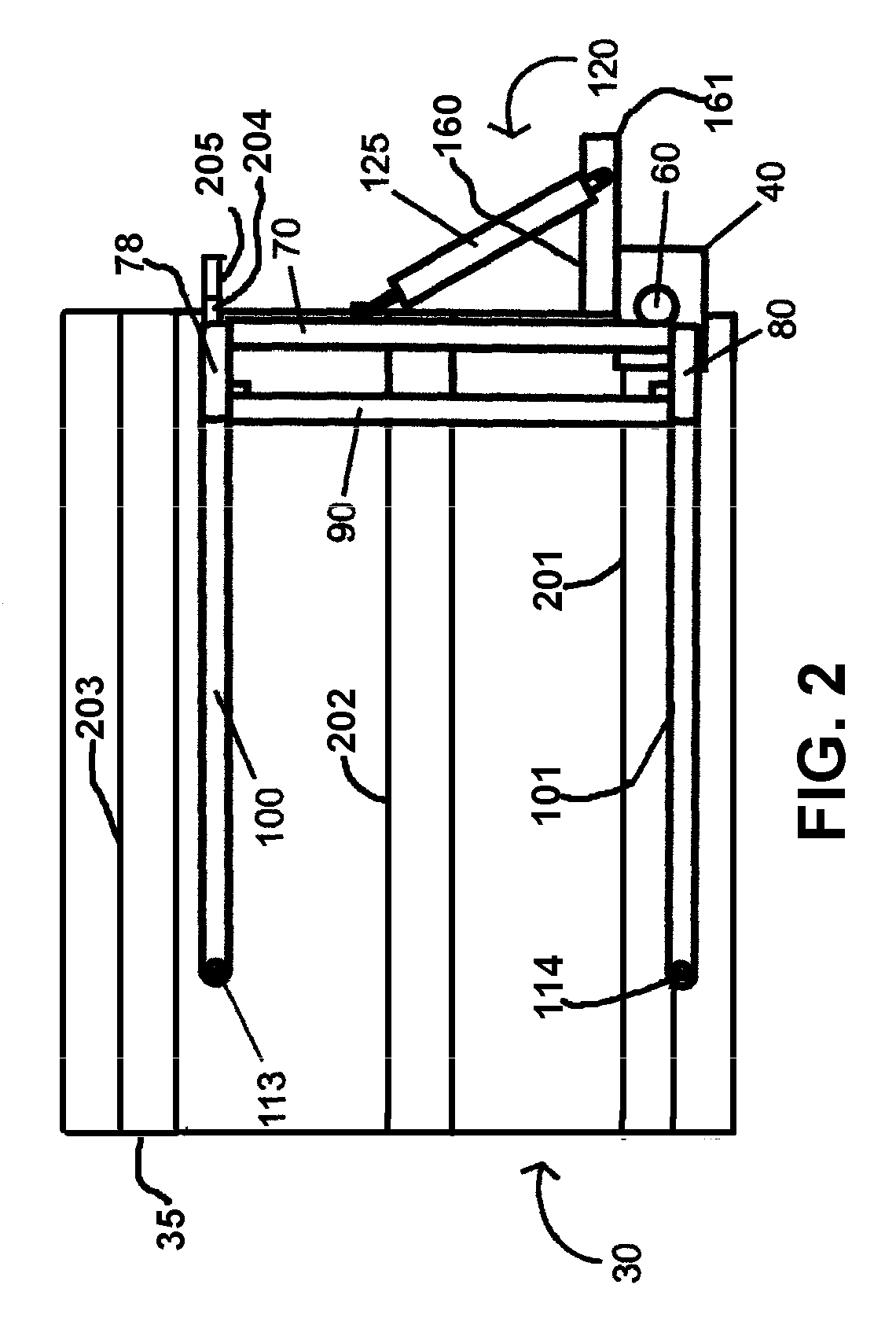Vehicle driver wheelchair lift
- Summary
- Abstract
- Description
- Claims
- Application Information
AI Technical Summary
Benefits of technology
Problems solved by technology
Method used
Image
Examples
Embodiment Construction
Exemplary Best Mode (Preferred Exemplary Embodiment)
[0018]The seven FIGS. 1-7 illustrate a first exemplary embodiment of a system 10 for lifting an driver 28 in a wheelchair 20 into and out of a vehicle 30. FIG. 1 shows system 10 without wheelchair 20 or vehicle 30, while FIG. 5 shows wheelchair 20 in place and system 10 in a first inside position 130 where driver 28 is properly located and oriented to drive vehicle 30. Vehicle 30 is a Dodge, Chevy, or Ford “Quad-Cab” truck, but could be any other vehicle having a sufficiently large side opening. FIG. 3 shows vehicle 30 has a sturdy frame 35 typically including a bar 201, a bar 202 and a bar 203 and other bars (not shown). Vehicle 30 has so-called “suicide-swing” rear door 502 that have a rear hinge (not shown) to open from the front and thus away from a forward door 506, providing a wider opening 510 for wheelchair 20 to enter vehicle 30. For safety purposes, a sensor 200 and a sensor 202 are provided to sense when wheelchair 20 is...
PUM
 Login to View More
Login to View More Abstract
Description
Claims
Application Information
 Login to View More
Login to View More - R&D
- Intellectual Property
- Life Sciences
- Materials
- Tech Scout
- Unparalleled Data Quality
- Higher Quality Content
- 60% Fewer Hallucinations
Browse by: Latest US Patents, China's latest patents, Technical Efficacy Thesaurus, Application Domain, Technology Topic, Popular Technical Reports.
© 2025 PatSnap. All rights reserved.Legal|Privacy policy|Modern Slavery Act Transparency Statement|Sitemap|About US| Contact US: help@patsnap.com



